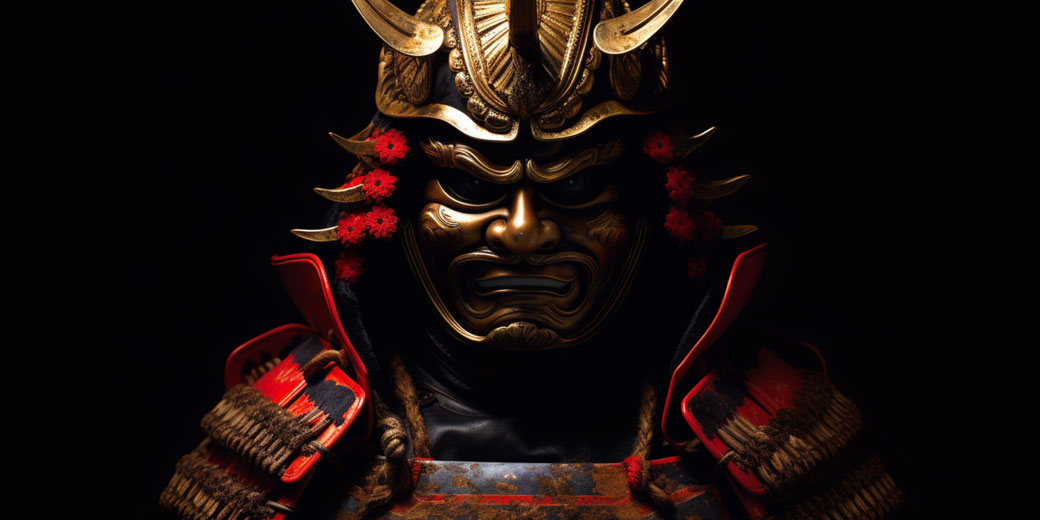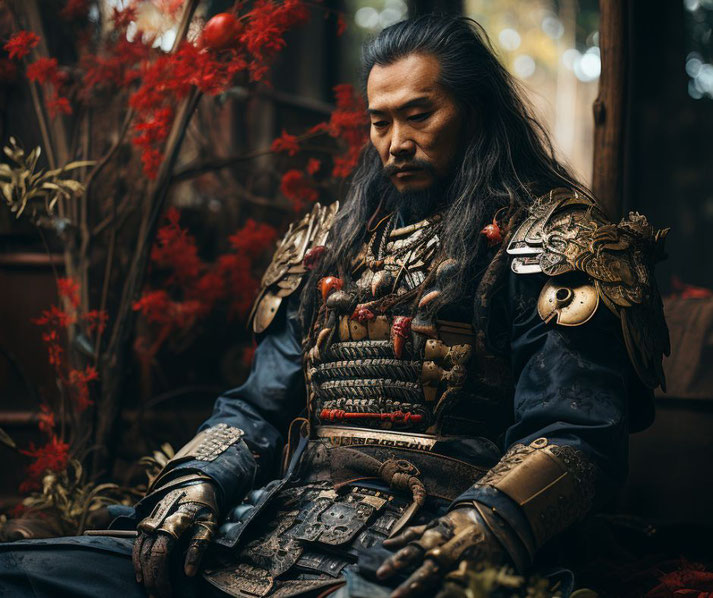The powerful reasons Japanese samurai invested so much time and money decorating their armour

The samurai, Japan's legendary warrior class, are often depicted in popular culture as stoic figures of honor and martial prowess.
Yet, beyond their iconic katana and disciplined demeanor, there lies a world of symbolism and history woven into their armour.
Each piece of a samurai's armour, or "yoroi," tells a captivating story about its wearer, reflecting their status, personal beliefs, and the era they lived in.
The evolution of samurai armour
The earliest samurai armour, known as "ō-yoroi," was heavily influenced by the armours of Tang Dynasty China and Korea.
Introduced in the 10th century, these armours were large and boxy, designed primarily for horseback archery.
The ornate and cumbersome nature of the ō-yoroi reflected the samurai's role as a part of the aristocracy, with their armours often adorned with family crests and symbols of power.
As warfare tactics evolved, so did the samurai's armour. The 14th century saw the introduction of "dō-maru" and "haramaki," lighter and more flexible armours that allowed for greater mobility on foot.
This shift reflected the changing nature of warfare, with battles becoming more grounded and less focused on horseback combat.
How items could be personalized
Samurai armour was not just a tool for protection; it was also a canvas for personal expression and symbolism.
The "kabuto," or helmet, often featured intricate designs, such as family crests, Buddhist symbols, or mythological creatures, which were believed to offer spiritual protection to the wearer.
The "menpō," or facial armour, was another significant aspect of the samurai's armour.
These masks, often designed to inspire fear with fierce expressions, were also reflective of the wearer's personality and beliefs.
Some samurai chose to have their masks fashioned in the likeness of "oni" (demons), while others preferred the visage of "tengu" (supernatural beings known for their martial prowess).

Common imagery used on samurai armour
Samurai armour was often adorned with various symbols, each carrying its own unique meaning.
These symbols could represent a variety of things, from family lineage and spiritual beliefs to personal characteristics and virtues.
Mon (Family Crests)
The most common symbols on samurai armour were family crests, or "mon." These symbols represented the samurai's lineage and were often placed prominently on the helmet and chest plate. Each family had its own unique mon, and these symbols served as a way to identify different samurai on the battlefield.
Dragons
Dragons are a common symbol in Japanese mythology, often representing strength, wisdom, and power. A samurai with a dragon on his armour was seen as a formidable and wise warrior.
Cherry Blossoms
Cherry blossoms, or "sakura," are a symbol of the fleeting nature of life in Japanese culture. This symbol on a samurai's armour represented the samurai's acceptance of the transience of life and their readiness to die in battle.
Cranes
Cranes are seen as symbols of longevity and good fortune in Japanese culture. A samurai with a crane on his armour was seen as blessed and fortunate.
Tigers
Tigers are symbols of courage and absolute power in Japanese culture. A samurai with a tiger on his armour was seen as a brave and powerful warrior.
Buddhist Symbols
Many samurai were devout Buddhists, and their armour often featured Buddhist symbols. For example, the "tomoe," a comma-like swirl, represents the play of forces in the cosmos in Shinto and Buddhism. Similarly, the "manji," a swastika-like symbol, represents universal harmony and the balance of opposites.
Mythological Creatures
Creatures from Japanese mythology, like the "tengu" (a supernatural being known for martial prowess) or the "oni" (a kind of demon or ogre), were also common. These were believed to offer spiritual protection to the wearer.
Why samurai armour was a form of psychological warfare
Samurai armour was not just a tool for physical protection; it was also a powerful instrument of psychological warfare.
The design, symbolism, and overall aesthetic of the armour were all meticulously crafted to intimidate opponents and inspire allies.
Samurai armour was often designed to be imposing and fearsome. The "menpō" or facial armour, for instance, was frequently fashioned to depict fierce expressions or demonic visages, intended to strike fear into the hearts of enemies.
The size and ornamentation of the armour were also used to create an imposing image.
The "ō-yoroi," or great armour, was large and boxy, designed to make the samurai appear larger and more formidable on the battlefield.
The armour was often adorned with gold and silver, reflecting the samurai's status and wealth, and serving to intimidate lesser-equipped opponents.
Some elements of the samurai armour were designed to create noise during movement.
This noise could disorient enemies during combat and make the samurai's movements seem more threatening.
Bright and contrasting colours were often used in samurai armour to make the wearer stand out on the battlefield.
This visibility could be intimidating to opponents, as it demonstrated the samurai's confidence and fearlessness.
As you can now see, a samurai's armour was more than just a protective shell; it was a reflection of their identity, status, and the times they lived in.
Each piece, from the helmet to the facial armour, told a story about the wearer, making the samurai's armour a fascinating subject of study for historians and enthusiasts alike.
The armour of a samurai, therefore, serves as a silent testament to the complex socio-political dynamics, personal beliefs, and evolving warfare tactics of feudal Japan.
What do you need help with?
Download ready-to-use digital learning resources
Copyright © History Skills 2014-2024.
Contact via email
With the exception of links to external sites, some historical sources and extracts from specific publications, all content on this website is copyrighted by History Skills. This content may not be copied, republished or redistributed without written permission from the website creator. Please use the Contact page to obtain relevant permission.





